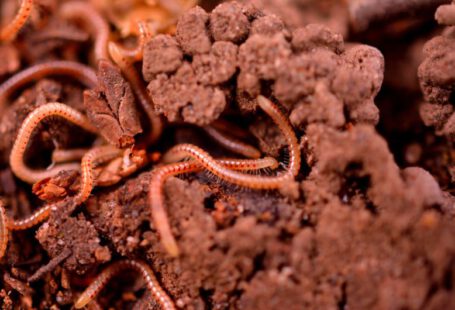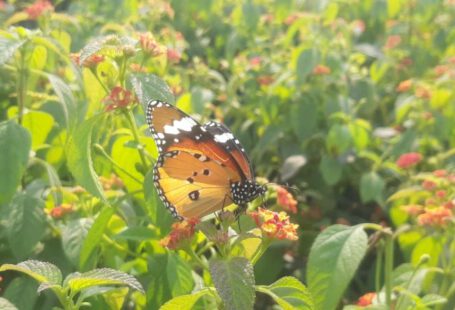Creating a lush and inviting green space in a small area can be a fun and rewarding endeavor. With limited space, it’s essential to strategize on the best way to arrange plants to maximize the beauty and functionality of your garden or indoor space. By carefully planning the layout and selection of plants, you can transform even the tiniest of spaces into a thriving green oasis. Here are some tips on how to arrange plants in a small space effectively.
Utilize Vertical Space
When working with limited horizontal space, look up! Vertical gardening is a fantastic way to make the most of a small area. Consider hanging planters, wall-mounted containers, or trellises to grow plants vertically. This not only adds visual interest but also maximizes the amount of greenery you can incorporate into your space. Vining plants like pothos, philodendron, or ivy are excellent choices for vertical gardens as they can cascade down beautifully.
Group Plants Strategically
To create visual impact and cohesion in a small space, group plants with similar care requirements together. This not only simplifies maintenance but also allows you to create mini garden “zones” based on sunlight, water, or humidity needs. For example, grouping shade-loving plants like ferns and peace lilies in a corner with low light, while placing sun-loving succulents on a sunny windowsill, can help each plant thrive in its ideal conditions.
Mix Plant Sizes and Shapes
In a small space, playing with different plant sizes and shapes can add depth and interest to your arrangement. Mix tall, medium, and trailing plants to create a dynamic and visually appealing display. Taller plants like snake plants or bird of paradise can add height, while bushier plants like philodendron or pothos can fill in empty spaces. Trailing plants such as string of pearls or spider plants can cascade down from shelves or hanging planters, adding a whimsical touch to your arrangement.
Consider Dual-Purpose Plants
In a small space, every plant should serve a purpose. Opt for plants that not only look beautiful but also provide additional benefits such as air purification, aromatherapy, or edible produce. Plants like lavender, rosemary, or mint not only add fragrance to your space but can also be used in cooking or teas. Spider plants and peace lilies are excellent air-purifying plants that can help improve indoor air quality. By selecting dual-purpose plants, you can make the most of your limited space while enjoying the added benefits they offer.
Create Visual Interest with Color and Texture
In a small space, incorporating a variety of colors and textures can make your plant arrangement visually stunning. Mix and match plants with different foliage colors, shapes, and textures to create a vibrant and dynamic display. Consider pairing plants with variegated leaves with solid-colored foliage for contrast, or combining plants with different leaf shapes like spiky succulents with round-leafed ferns for visual interest. Don’t be afraid to experiment and get creative with your plant selection to achieve a visually appealing arrangement.
Maximize Natural Light
Proper light exposure is crucial for the health and growth of your plants. In a small space, it’s essential to maximize natural light to ensure your plants thrive. Place light-loving plants like succulents, cacti, or herbs near windows or in well-lit areas to provide them with the sunlight they need. Consider using reflective surfaces like mirrors or light-colored walls to bounce natural light around the space and brighten darker corners. If natural light is limited, supplement with grow lights to ensure your plants receive adequate light for healthy growth.
Choose the Right Containers
Selecting the right containers is key to a successful plant arrangement in a small space. Opt for containers that not only complement your plant selection but also fit the scale of your space. Hanging planters, wall-mounted pots, or tiered plant stands are excellent space-saving options for small areas. Consider using containers with built-in trellises or shelves to maximize vertical space. Additionally, choose containers with proper drainage to prevent overwatering and ensure the health of your plants.
Incorporate Seasonal Interest
To keep your plant arrangement engaging throughout the year, consider incorporating plants that provide seasonal interest. Choose plants that bloom at different times of the year or have foliage that changes color with the seasons. Bulbs like tulips or daffodils can add a pop of color in the spring, while ornamental grasses or autumn-blooming flowers can provide visual interest in the fall. By planning for seasonal changes, you can create a dynamic and ever-evolving plant arrangement in your small space.
Conclusion:
Arranging plants in a small space requires thoughtful planning and creativity to make the most of the limited area. By utilizing vertical space, grouping plants strategically, mixing plant sizes and shapes, and incorporating dual-purpose plants, you can create a lush and visually appealing green oasis. Consider color, texture, natural light, containers, and seasonal interest to design a plant arrangement that not only beautifies your space but also brings joy and tranquility to your surroundings. With these tips in mind, you can transform any small space into a thriving garden retreat.





